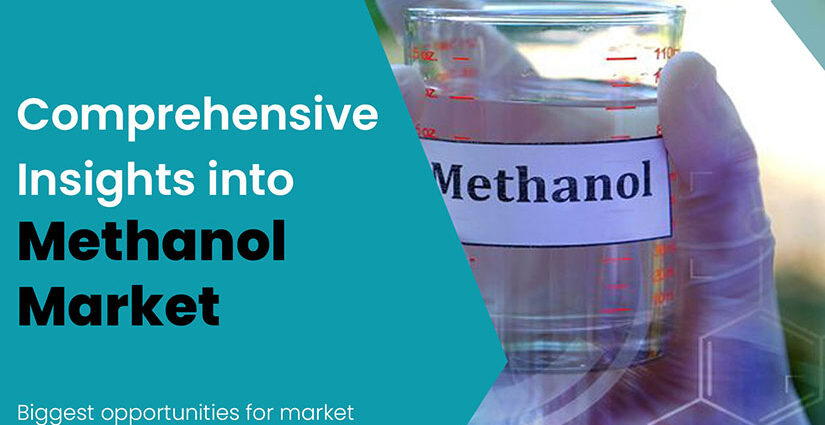Methanol is a compound that is used as an alternative fuel. It is also known as wood alcohol. The properties of methanol are similar to the chemical and physical properties of ethanol. Methanol is produced by steam-reforming natural gas for producing synthesis gas. The addition of this gas into a reactor in the presence of a catalyst causes water vapor and methanol. Natural gas is preferred over other feedstocks for methanol production due to its affordable cost.
Advantages of Methanol
Methanol production costs less compared to the rest alternative fuels. It offers high safety due to a lower risk of flammability, as compared to gasoline. A range of domestic carbon-based feedstocks can be utilized for methanol manufacturing such as natural gas, coal, and biomass.
Presently, natural gas and coal are utilized for methanol production on a commercial scale. It is made from various renewable sources, such as biomass, municipal waste, and recycled carbon dioxide. Usage of methanol as an alternative fuel in achieving sustainable goals.
Methanol is widely utilized in petrochemical manufacturing such as acetic acid, olefins, dimethyl ether, methyl tert-butyl ether, formaldehyde, methyl methacrylate, and solvent. Along with this, there is a rise in the demand for methanol-based fuel in transportation, due to environmental concerns.
The consumption of methanol in liquid form is rising for powering transports such as trucks, buses, and ships around the world, as it is a highly affordable, and clean-burning fuel. It significantly decreases nitrogen oxides, sulfur oxides, and particulate matter produced by transportation and provides support in enhancing air quality. Thus, it supports in achieving sustainable development goals.
Methanol is used as a feedstock for producing chemicals such as formaldehyde, and acetic acid. These are further utilized in products such as plywood subfloors, adhesives, foams, windshield washer fluid, and solvents.
Light olefins are highly utilized for producing numerous plastic products. The demand for methanol is rapidly rising in the olefins’ production. Moreover, the methanol-to-olefins process costs less compared to naphtha use.
Moreover, methanol is highly utilized for power generation as an alternative liquid fuel, more specifically in remote areas where diesel can-not be accessed, due to the absence of gas pipelines. Only a few changes and expenditures are required for adapting to existing power plants and associated infrastructure for accommodating the methanol application as a power fuel.
Furthermore, it also offers utility fuel flexibility, so that power plants running on diesel can convert to methanol, and back to diesel, depending on the requirement, without impacting the efficiency of operations, or machinery.
Therefore, methanol consumption is rising as an alternative fuel in the transportation sector due to rising environmental concerns.
Browse more reports:
Biodiesel has gained widespread traction recently due to its numerous benefits over petroleum, which could help with the growing environmental concerns. It is a renewable resource that can be produced from used cooking oil, vegetable oils, animal fats, and restaurant grease. More specifically, it is produced by altering the properties of such materials to make it perform like petrol or diesel fuel. Large as well as small-scale manufacturers are involved in its production, as there are numerous advantages of biodiesel in everyday life.
Environmental Benefits of Biodiesel
Biodiesel is good for the economy, being one of the top renewable fuels and an alternative for petrol and diesel. It has lower carbon dioxide emissions as compared to other fuels; hence, it reduces the global warming impact and improves human and animal health. Moreover, it is less toxic and safe for handling due to a higher flash point. Biodiesel also contributes to the recycling of waste products, as it is produced from used oils and fats.
Moreover, it is the only alternative fuel successfully evaluated by the U.S. Environmental Protection Agency under its Clean Air Act. According to an EPA study, biodiesel has 47% lesser particulate matter, 48% lesser carbon monoxide, 67% lesser unburned hydrocarbons, 80% lesser PAH, 90% lesser nPAH, and 50% lower speciated hydrocarbons ozone-forming potential as compared to petroleum diesel fuel. Moreover, the complete absence of sulfur in this fuel results in reduced pollution.
Biodiesel Transforming Automotive Industry
Added Benefits over Petroleum: Apart from being a low polluter, biodiesel is more lubricative than conventional diesel, therefore can reduce engine wear. This would ultimately improve the vehicle mileage and reduce emissions even further, while also reducing the requirement for regular engine repairs.
Biodiesel Fuel Blends: There are various blends depending on the ratio of biodiesel to petroleum fuel. For instance, the B20 blend has 80% petroleum diesel and 20% biodiesel. With the introduction of ultra-low and low-sulfur diesel, many products that were used to enhance the lubricity of the fuel have been discontinued. So, by adding merely 5% biodiesel to low- and ultra-low-sulfur diesel, it can become more lubricative. Further, to enhance the cold-operating capacity of petroleum in winters, a blend with 70% biodiesel and 30% petroleum diesel is used.
Thus, biodiesel beats all alternative fuels with its lower pollution emissions, which has been speeding up its consumption in automobiles.

